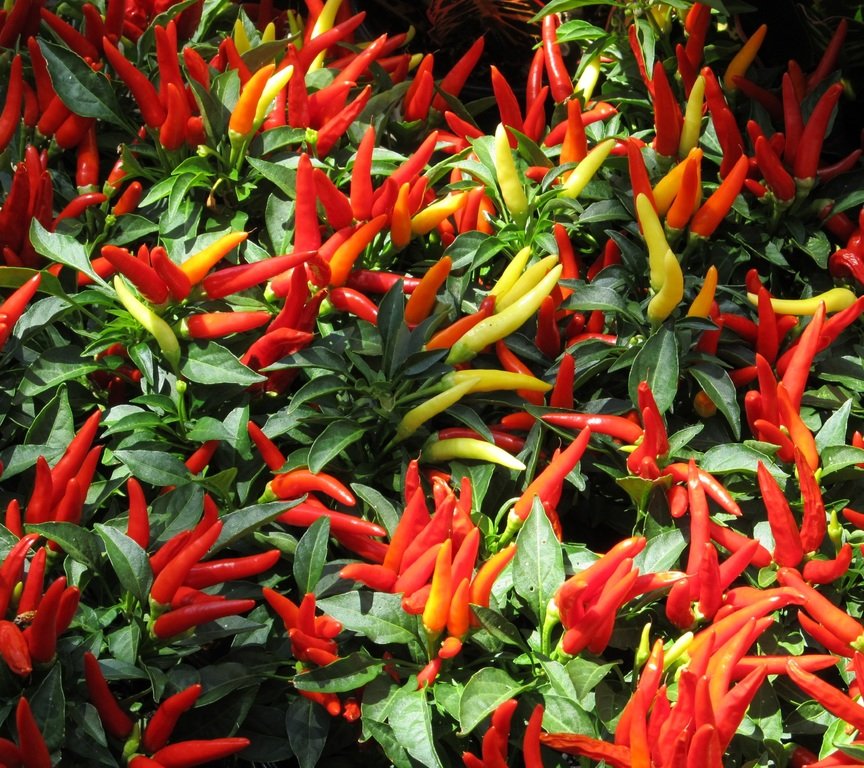Table of Contents Show
Are pests wreaking havoc on your beloved garden? If you’re tired of dealing with pesky insects and critters that are feasting on your plants, it’s time to consider a natural solution: cayenne pepper.

This powerful spice not only adds a kick to your favorite dishes but also possesses properties that can effectively deter pests from invading your garden.
In this article, we will explore ten tips on how to use cayenne pepper as a safe and organic method for pest control in your garden.
Cayenne pepper has been used for centuries as a natural repellent due to its pungent scent and spicy taste.
In this guide, we will explore the 10 tips about the spraying cayenne pepper on plants and how is it work. Let’s get started.
1. Create a Cayenne Pepper Spray
To create a simple and effective pest deterrent, mix 1 tablespoon of cayenne pepper powder with 1 quart of water and add 1 teaspoon of liquid dish soap. Pour the mixture into a spray bottle and shake well. Spray the solution on the leaves and stems of affected plants. The strong scent will repel pests without causing harm.
2. Deter Slugs and Snails
Create a barrier around vulnerable plants using cayenne pepper powder. Sprinkle the powder in a line around the plants or on the edges of your garden beds. Slugs and snails dislike the texture and will avoid crossing the barrier.
Read Also:
3. Protect Foliage from Slugs
Mix cayenne pepper powder with water to create a spray. Apply this solution directly to the foliage of plants that are susceptible to slug damage. The cayenne pepper will make the leaves less appealing to slugs, keeping them at bay.
4. Repel Ants
For an ant-repellent spray, mix cayenne pepper with water and spray it along ant trails and entry points to your garden. This will discourage ants from invading your plants and disrupting your garden.
5. Create Cayenne Pepper Powder Trails
To keep ants away from specific areas, create powder trails using cayenne pepper. Sprinkle the powder in lines around the areas prone to ant activity. Ants will avoid crossing these trails, providing a natural barrier for your garden.
6. Drive Away Aphids and Other Insects
Mix cayenne pepper with water and a few drops of dish soap to create an aphid-repellent spray. Apply this solution directly to plants affected by aphids to drive them away without harming the plants.
7. Protect Plants from Crawling Insects
Dust cayenne pepper powder on the leaves and stems of your plants to create a barrier against crawling insects like caterpillars and beetles. This natural shield will prevent these pests from feeding on your plants.
8. Discourage Rodents
Sprinkle cayenne pepper powder around the base of plants to discourage rodents, such as mice and rats, from approaching. The strong scent will deter them from foraging in your garden.
9. Deal with Larger Pests
For larger pests like rabbits and squirrels, mix cayenne pepper with crushed garlic and sprinkle the mixture near your plants. The pungent smell will keep these animals away from your garden.
10. Monitor and Reapply
Regularly monitor your garden for pest activity and reapply the cayenne pepper solutions as needed, especially after rainfall. Cayenne pepper’s potency can diminish over time, so consistent application is essential for continued effectiveness.
Remember to wear gloves when handling cayenne pepper and avoid touching your face or eyes. Additionally, be mindful of applying the pepper in windy conditions to avoid irritation.
FAQs
How Often Should I Water New Grass Seeds?
During the first 2 weeks, new grass seed needs light but frequent watering daily or every other day. After sprouting, reduce to 2-3 times per week, adjusting as needed based on growth and weather.
How Long Should I Water New Grass Each Time?
During the grow-in phase, prioritize frequent, short watering of about 5-10 minutes to keep the top 1-2 inches of soil consistently moist. For established lawns, water more deeply but less often.
When Is the Best Time of Day To Water New Grass Seeds?
The ideal time to water grass seed is early morning, which minimizes evaporation loss and the risk of fungal diseases. Avoid watering in the evening.
How Much Water Does New Grass Seed Need Per Week?
During grow-in, new grass needs about 1/2 inch of water daily or every other day. Once established, target 1 inch of weekly watering, adjusted as needed.
How Do I Know If I’m Watering New Grass Correctly?
Check the soil moisture daily by probing with a finger 1-2 inches deep. It should feel moist but not saturated. Grass seedlings going dormant or turning brown likely signal under-watering.
When Can I Reduce the Frequency Of Watering New Grass?
Once the new grass reaches about 3 inches in height and has been growing vigorously for 4-6 weeks, you can begin tapering off daily watering to a typical lawn schedule.
Final Words
In conclusion, using cayenne pepper to deal with pests in your garden is an eco-friendly, safe, and effective method.
By following these ten tips, you can naturally repel a wide range of pests without causing harm to your plants, the environment, or beneficial insects.
Embrace the power of cayenne pepper, and your garden will thrive as a pest-free haven of natural beauty.










